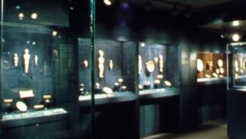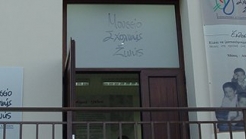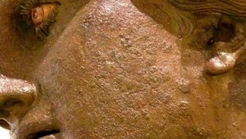

Greece
The National Museum of Modern Art began operating in 2000. This was a step to fill a big gap that existed for many years on international modern art for Athens.
The National Museum of Modern Art began operating in 2000. This was a step to fill a big gap that existed for many years on international modern art for Athens.
The museum immediately began with exhibitions of mostly critic and experimental nature, because the need had arisen. The museum does not have a permanent location, but by 2013, when the renovation of the ex- FIX factory will be completed in order to be the museum’s permanent location, there will be a decent collection of works of art of Greek and international artists, showcasing innovative tendencies and critic research of the artistic present, but also its historic depth, reaching the 2nd half of the 20th century.
The main objective of the cultural politics of the NMMA is to create and expand permanent exhibitions. The means for the acquisition of works of art to create those permanent exhibitions, are purchases, and especially offers of works of art.
Under the training politics of the NMMA, training programs for students and families, children’s workshops, tours and teacher’s seminars take place, in order to aid to the discovery and familiarization of people of all ages to the modern greek and international art.
Series of temporary exhibitions with an inquisitive eye are presented around the themes, concerns and searches of the modern international art, individual works under the Museum’s order, monographic recursions to the middle of the career of modern artists and historic recursions in the fields of painting, constructions, photography, video, new media and «experimental» architecture.


The Cycladic Art Museum was founded in 1986, in order to house the collection of exhibits of Cycladic and Ancient Greek art, of Nikolaos and Ekaterini Goulandri.


The Museum school life N. Chania was founded by the Local Authority Chania after initiative and proposal educational and spiritual people.


The Piraeus Archaeological Museum offers the visitor a complete image of the city’s history, which was marked by great sevelopment during the ancient times, both as a commercial center of the eastern Mediterranean, and also as a naval base of ancient Athens.
1039 Ε 6061 01515 00